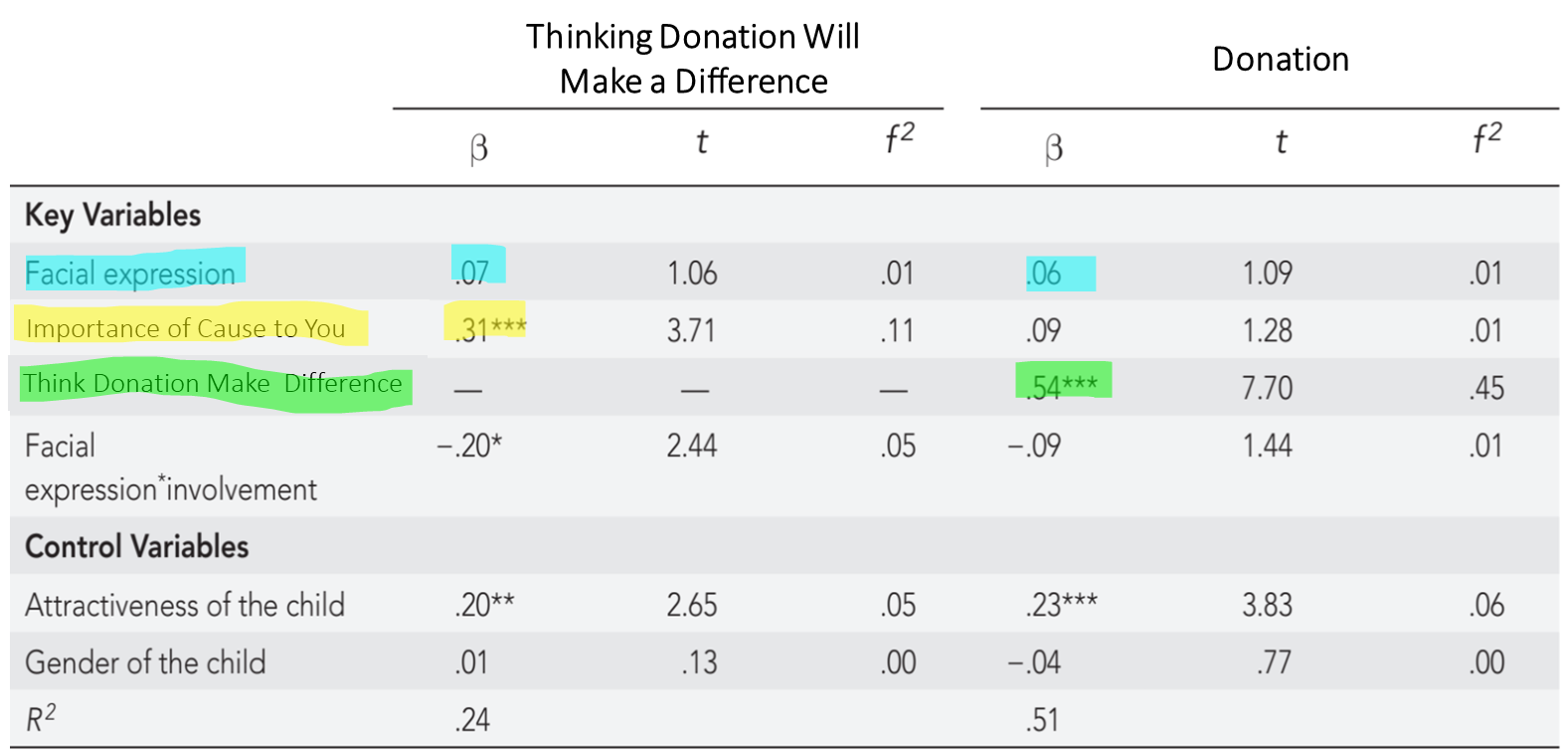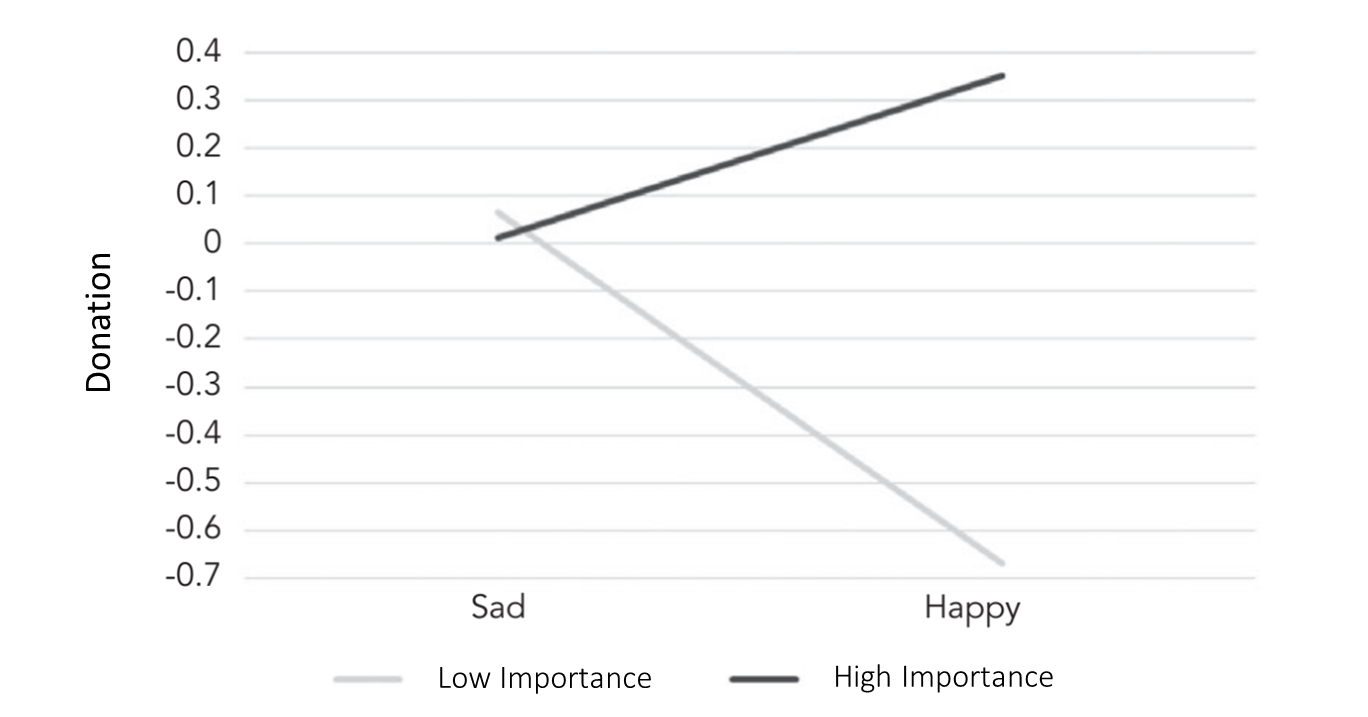Happy or Sad?
If you don’t show a sad face you’re not showing the need and therefore, reason to give. If you show a sad face you’re guilting people into giving and undermining the resilience of the beneficiary.
Happy! No, Sad! We want things to be as simple as possible, but not simpler. Arguing for one over the other as an absolute violates this maxim.
Here is research showing that the happy vs. sad image choice has no effect. This is wonky so here’s the simple takeaways:
- The facial expression being happy or sad (blue) didn’t matter to people thinking their donation would make a difference.
- If the cause is important to you (i.e. it matches your Identity and values) then you believe your donation will matter (yellow).
- If you believe your donation will matter then you’re more likely to donate (green).

But, this is the simpler than possible model, it assumes everyone is the same with happy or sad. And when you assume that you often get artificial, no effect findings because those who like happy cancel out those who respond better to sad.
This chart shows what was hidden. Happy works best for those with a deeper, more innate connection to the cause. The opposite is true for those with a lesser connection. Guess which ones are your better donors?

We’d argue this too oversimplifies. The better option is showing both in sequence, sad first, then happy. This needn’t be two images. We can show with words and story. Using a redemptive arc to storytelling feeds the full story of bad situation and circumstance (sad) to intervention (charity and donor) and positive change in outcome and circumstance (happy).
This arc matches our personal, most powerful stories. This creates connection. Further, I don’t give because you make me sad. I give because I want to feel not sad – i.e. happy. By showing me the end-game, the upside of the happier outcome, you increase the chance that I’ll decide giving vs. not is the better path to my feeling not sad.
Kevin



Research or not sad and dying people’s images takes away people’s dignity. No human being wants to be shown in public at their worst moment regardless how poor or needy that person is.
There’s also a range beyond “happy” or “sad” – determined, principled, resolute, resigned, content, ….. There are visual cues that add to the story beyond the “happy” “sad” dichotomy. And if the picture doesn’t advance, support, reflect the story, does it even matter if it’s happy or sad? There’s rarely an easy simple answer and we need to stop looking for one.
Spot on, Tracy. Rather than making decisions based on happy versus sad, the priority ought to be to create and select images that are authentic, truthful, well-executed, and contribute to the overall narrative. That still allows for, as you suggest, the opportunity to choose from among a spectrum of nuanced emotions if need be.